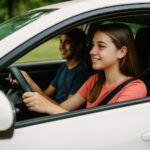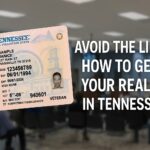Last month the Tennessee Highway Patrol (THP) released Tennessee’s fatality figures for 2018. Accidents are up by 2.2%, and pedestrian fatalities have increased dramatically. Stillman and Friedland reached out to the THP to ask what is behind the trends. As usual, prevention begins with non-distracted and sober drivers, but these days pedestrians are also distracted and putting themselves at risk.
Let’s have a look at the numbers. From the beginning of 2014 though to the end of 2018, fatalities have continued to increase incrementally year-by-year with a total increase of over 9% over that five-year period. We asked ourselves if this was proportionate to population growth increase. More people, more accidents, maybe?
We checked that number against population growth for the same time period and found that Tennessee’s population increase was about 3.5% for those 5 years. What that means is that the increase in accident fatalities is nearly three times the rate of population growth. Fatal accidents are significantly outstripping the numerical rise in Tennessee residents.
Teen fatalities were down to 233 from 2017’s spike of 245, but still 9.9% over the 2014 figures. These are tragic numbers and more must be done to educate this age group. Prevention means:
• Awareness of the dangers of distracted driving
• Limiting the number of passengers teens are allowed to transport.
• Letting your teen know that you will bring them home if they or their ride are too impaired to drive.
There are school programs which use driving simulations to show how just a few seconds of ignoring the road—especially while texting—can result in a lethal crash. If your school is not offering this kind of program, urge them to do so and discuss this topic with your teen yourself.
Parents can limit the use of cell phones while driving through special apps. You can set a limit on the number of kids your teens can chauffeur. We have previously cited firm statistics showing that the more kids there are in a car, the higher the accident risk. Ideally, that would be one or two at the absolute most.
Be available to get your kid out of a tight spot. If you cannot pick them up yourself, Lyft and Uber make arranging S.O.S. transport for your kids easier and cheaper than ever before. Of course, it would be better if kids avoided drugs and alcohol, but it is better to be realistic and open than to have the risk of a fatal crash. Let your teen know that they can call you if they are in a tight spot. You can ground them the next day and make them pay or do chores to pay for the taxi, because this is not something that should become a habit. Bottom line: tough love. Kids need either better habits or better friends.
Both teen and adult drivers are affected by our next danger point. We all know that the cell phone is a bad distraction of the road, but did you know that daydreaming is the prime distraction leading to fatal crashes?
If you find that your trip to the grocery store is a blank, and somehow you are already parking the car, you were probably daydreaming most of the way there. If this is a pattern for you, especially during routine drives, you need to find a way to re-focus on the road.
The NHSA (National Highway Safety Administration) has a list of eight tips to help you stay focused and alert while on the road. Here is our boiled-down quick rundown to keep you on your toes:
• Familiarize yourself with spending time doing just one thing. These days we all multi-task, which, let’s face it, means doing a lot of tasks without really thinking about them. That is exactly what we want to avoid while driving.
• Be set to go. If listening to the radio helps you focus, have it tuned and set before you hit the road. Using a program like Waze to get to where you are going? Turn it on and set your destination before you get going, not at the first red light. Grooming also falls into this category. Look good before you get in the car; you can recheck yourself when parked.
• Don’t snack or use your phone while driving, both take away focus.
• Traveling with pets or kids? Either way, potty and snacks before they get in the car to keep them quiet, restraints to keep them safe. More simple tips here.
Do not forget that you need to drive defensively. These days you must be alert to other drivers who may be weaving or swerving while distracted. Not only drivers, but also pedestrians are more distracted.
Pedestrian fatalities are the sharpest-rising statistic in Tennessee. From 89 in 2014 to 139 in 2018, this is almost a 55% increase. They may be crossing the road looking at their phone and not at traffic, or they may be drunk or drugged and crossing recklessly. Either way, they are a danger to themselves and drivers who may swerve to avoid hitting them.
THP’s Chris Osbourn, TITAN (Tennessee Integrated Traffic Analysis Network) Program Director for District 9, could not label a single, specific cause for the staggering increase, but noted:
“Impaired pedestrians continue to be a challenge, and while distracted driving has increasingly become a major traffic safety issue, you also have an increase in distracted pedestrians.”
As we have noted in these posts many times, better safety is always dependent on the individual human factor. While schools, parents, and state and local authorities can have a major impact with education and enforcement, ultimately it is the responsibility of the individual to choose safety for themselves and those around them.
We hope you make the best choices for yourself and your loved ones. And let’s hope for a safer year in 2019.
Because we care.






